 Maricar, Betsy, B
Maricar, Betsy, BThe garden where we were staying was in full bloom!
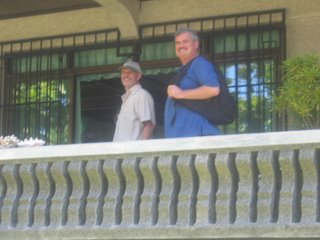 Terry and Randy are ready to go!
Terry and Randy are ready to go! Multi tasking Rose kept us on time and in the right place all weekend long!
Multi tasking Rose kept us on time and in the right place all weekend long!She s a local school teacher who volunteers her time to be a local Rotarian liason and assistant.


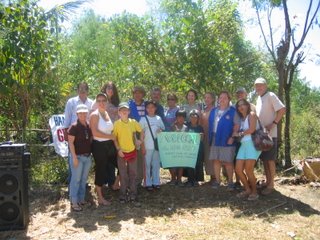
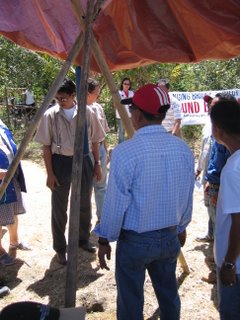 They lowered a time capsule into the ground near where the bridge will be built.
They lowered a time capsule into the ground near where the bridge will be built.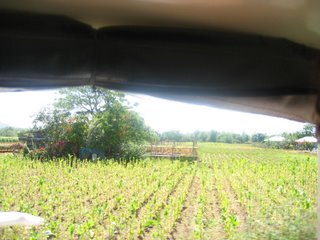 Tobacco is grown in this part of the island.
Tobacco is grown in this part of the island.
We returned from the ground breaking ceremony and quickly changed for our boat trip out to Ilin Island.

For seven years Joe, one of the members of our group who is not associated with Rotary, has been working with the people of Ilin island to reestablish the rain forest there which had been completely devastated by deforestation. He and his local Filipino partner, Adel, have been educating the indigenous people about conserving the natural resources of the island. A major problem all throughout the Philippines, as well as many other tropical countries of the world, is deforestation.
The local people cut down the forest and sell the wood to make a living. Then the rains come and wash the unprotected soil into the ocean killing the coral reef which fishermen counted on to make a living. The deforestation of the islands is the primary reason for the terrible, deadly landslides during torrential rains. Joe, Adel, and the ten local families which have joined them have planted mahogany trees which are fast growing and provide a short canopy within 6 or 7 years. The ground cover begins to grow in the shade and young endemic plants and trees are reintroduced and are able to survive in the shade of the mahogany trees. The plan is for the natural plants to thrive and grow, then the mahogany trees will be harvested and sold when the forest is showing the abilily to thrive on its own.
 Thriving mahogany forest with endemic ground cover reemerging.
Thriving mahogany forest with endemic ground cover reemerging.
We hiked for about 3 hours all over the island.
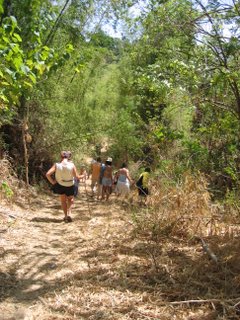
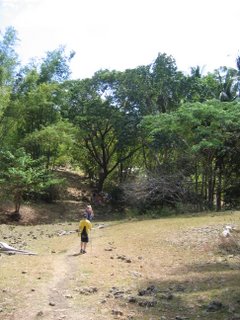 In this picture you can see the contrast between the part of the island which has been reforested and the state it was in before planting started.
In this picture you can see the contrast between the part of the island which has been reforested and the state it was in before planting started.
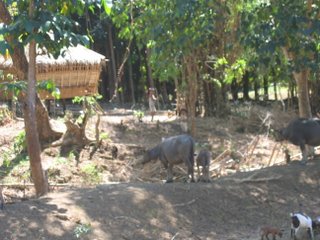
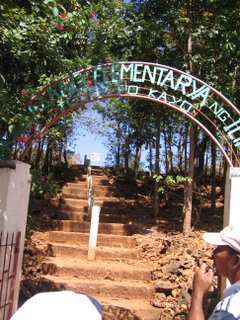 Elementary School
Elementary School
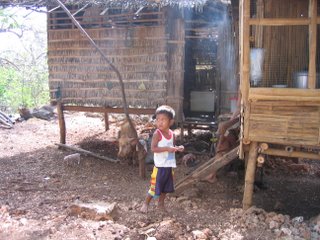

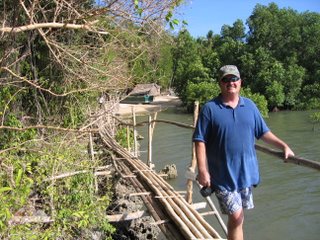
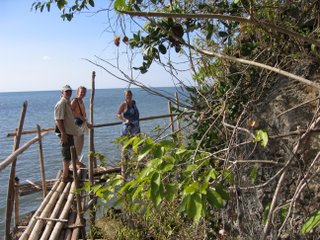 This really long bamboo bridge skirts the mangrove trees
This really long bamboo bridge skirts the mangrove trees
around the perimeter of the island.
The mangrove trees are being replanted on the protected shoreline of the island.
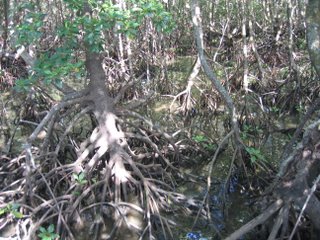
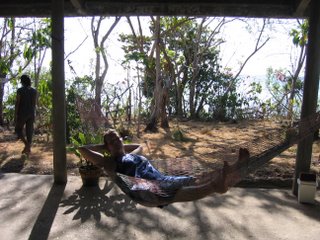
 An important aspect in helping this project work is supplying the local people with a way to make a living that will not destroy their environment. One project going on here is the making of hammocks. These are made by the fishermen who use their skill and knowledge of making fishing nets to knot hammocks.
An important aspect in helping this project work is supplying the local people with a way to make a living that will not destroy their environment. One project going on here is the making of hammocks. These are made by the fishermen who use their skill and knowledge of making fishing nets to knot hammocks.
Another venture has been the collection and use of natural debris: discarded parts of the coconut, palm, and bamboo plants to make charcoal brickets.
This machine presses and forms the charcoal into uniform brickets.
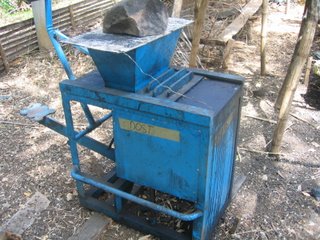
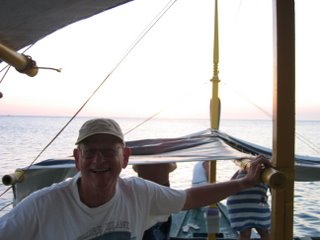

 We enjoyed a beautiful sunset on our way back to San Jose.
We enjoyed a beautiful sunset on our way back to San Jose.
A perfect ending to an incredible weekend experience!
Read more about the rainforest project.
Download Attachment: 3rd Generation Rainforest.pdf

For seven years Joe, one of the members of our group who is not associated with Rotary, has been working with the people of Ilin island to reestablish the rain forest there which had been completely devastated by deforestation. He and his local Filipino partner, Adel, have been educating the indigenous people about conserving the natural resources of the island. A major problem all throughout the Philippines, as well as many other tropical countries of the world, is deforestation.
The local people cut down the forest and sell the wood to make a living. Then the rains come and wash the unprotected soil into the ocean killing the coral reef which fishermen counted on to make a living. The deforestation of the islands is the primary reason for the terrible, deadly landslides during torrential rains. Joe, Adel, and the ten local families which have joined them have planted mahogany trees which are fast growing and provide a short canopy within 6 or 7 years. The ground cover begins to grow in the shade and young endemic plants and trees are reintroduced and are able to survive in the shade of the mahogany trees. The plan is for the natural plants to thrive and grow, then the mahogany trees will be harvested and sold when the forest is showing the abilily to thrive on its own.
 Thriving mahogany forest with endemic ground cover reemerging.
Thriving mahogany forest with endemic ground cover reemerging.We hiked for about 3 hours all over the island.

 In this picture you can see the contrast between the part of the island which has been reforested and the state it was in before planting started.
In this picture you can see the contrast between the part of the island which has been reforested and the state it was in before planting started.
 Elementary School
Elementary School


 This really long bamboo bridge skirts the mangrove trees
This really long bamboo bridge skirts the mangrove treesaround the perimeter of the island.
The mangrove trees are being replanted on the protected shoreline of the island.


 An important aspect in helping this project work is supplying the local people with a way to make a living that will not destroy their environment. One project going on here is the making of hammocks. These are made by the fishermen who use their skill and knowledge of making fishing nets to knot hammocks.
An important aspect in helping this project work is supplying the local people with a way to make a living that will not destroy their environment. One project going on here is the making of hammocks. These are made by the fishermen who use their skill and knowledge of making fishing nets to knot hammocks.Another venture has been the collection and use of natural debris: discarded parts of the coconut, palm, and bamboo plants to make charcoal brickets.
This machine presses and forms the charcoal into uniform brickets.


Thanks Joe for a great learning experience!

 We enjoyed a beautiful sunset on our way back to San Jose.
We enjoyed a beautiful sunset on our way back to San Jose.A perfect ending to an incredible weekend experience!
Read more about the rainforest project.
Download Attachment: 3rd Generation Rainforest.pdf
The first stop today was at the dedication of a new high school about an hour north of San Jose.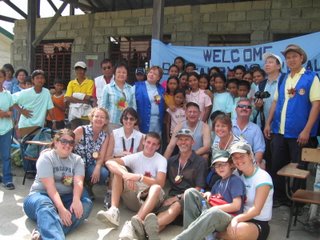
 old building
old building
 new building
new building
We then went another hours into the mountains north of San Jose to visit the Mangyan Tribe for which rotary is sponsoring a water project. They are piping water to the village from a fresh water spring at Black Mountain.
 old building
old building new building
new building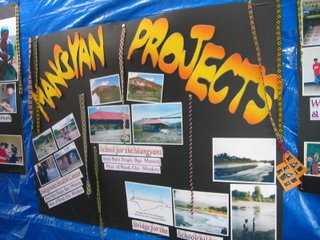





 This woman practices the chewing of beetle nut.
This woman practices the chewing of beetle nut.It makes their teeth black and is seen as beautiful.
 Another recently finished Rotary project was the building of a
Another recently finished Rotary project was the building of apavilion and small building used as the school and the health clinic.
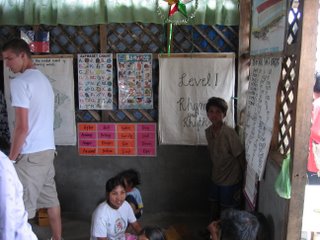 This is the small school building which is also used as the village clinic.
This is the small school building which is also used as the village clinic.

 These children are graduating from grade 1
These children are graduating from grade 1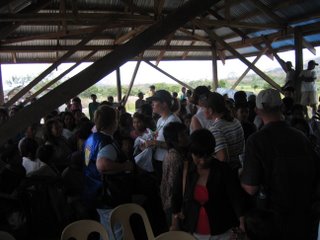 Before leaving we distributed the clothing, shoes, and school supplies we had
Before leaving we distributed the clothing, shoes, and school supplies we hadcollected for the children. Unfortunately, there were many more children
than we expected so we will have to bring more the next time we visit.

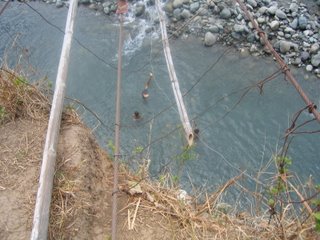 It was pretty far down there! See the children swimming?
It was pretty far down there! See the children swimming?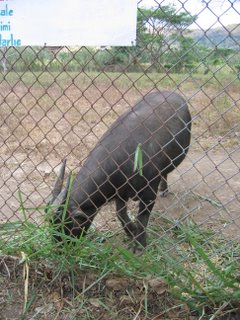 Baby Tamaraw- 7 years old. Looks like a cross between a caribou and a water buffalo.
Baby Tamaraw- 7 years old. Looks like a cross between a caribou and a water buffalo.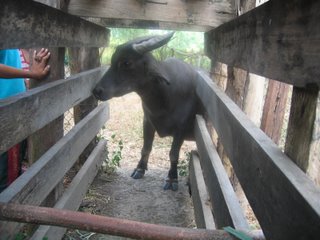 Mother Tamaraw Mimi
Mother Tamaraw Mimi There is plenty of security everywhere we go here in Minduro.
There is plenty of security everywhere we go here in Minduro. B, Celia, Maricar, Betsy, Michelle
B, Celia, Maricar, Betsy, Michelle We had beautiful weather and beautiful scenery!
We had beautiful weather and beautiful scenery!We were able to go to our hotel and take a quick shower before heading out to our final engagement of the day, a kindergarten graduation. This is the second graduating class for this little school started to help poor children get ready for first grade. It is very difficult for children to qualify for first grade in this country without some kind of preschool education. This school concentrates on the skills needed to be successful in first grade. Last year 25 graduated, this year 47 graduated. There were two classes with two teachers.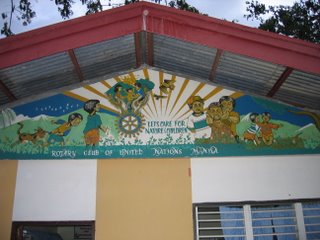

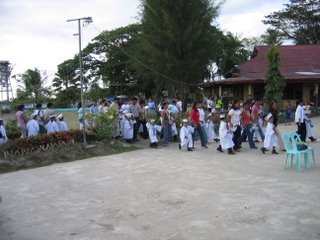
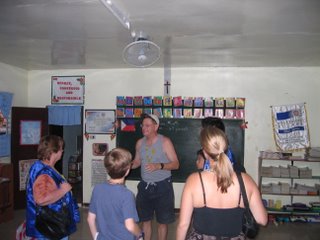
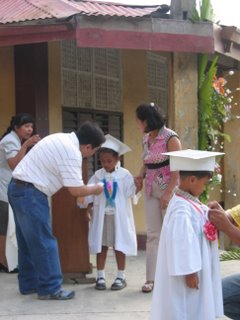 After the graduation we had an incredible dinner of shrimp, crab, pansit, mango salad, and flan for dessert. Lito (in above picture) is a local administrator for Rotary who lives across the street from the school. He and his mother arranged for the feast for about 20 of us. What a great time!
After the graduation we had an incredible dinner of shrimp, crab, pansit, mango salad, and flan for dessert. Lito (in above picture) is a local administrator for Rotary who lives across the street from the school. He and his mother arranged for the feast for about 20 of us. What a great time!Friday, March 17, 2006
Happy St. Patrick's Day!
We were up and at the airport at 4 AM for our flight to Occidental (western) Minduro for a weekend of full of interesting and exciting adventures. We arrived and had breakfast before boarding a banca boat for another island where we visited the with the village people, toured their school, and hiked down into a cave to see the beautiful crystals and clear pool of spring water. Michelle, Wilma, Roland, Joe, B, Allison, Ryan, Randy
Michelle, Wilma, Roland, Joe, B, Allison, Ryan, Randy
 Michelle, Wilma, Roland, Joe, B, Allison, Ryan, Randy
Michelle, Wilma, Roland, Joe, B, Allison, Ryan, Randy

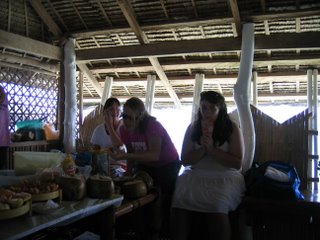
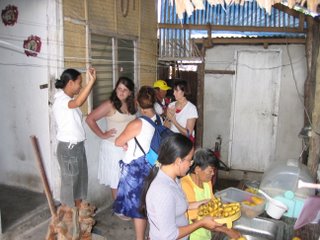
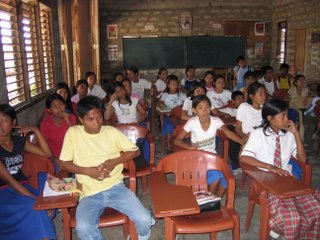 School here goes to 3 third year high school which is 9th grade. Only 5 students from this village have graduated go on to graduate from college, which is only two years more.
School here goes to 3 third year high school which is 9th grade. Only 5 students from this village have graduated go on to graduate from college, which is only two years more.

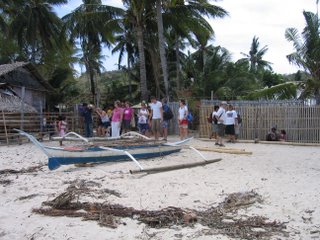 When it was time to board the boat back to San Jose, the tide had gone out so we had to take turns riding on a small raft to get us back to the banca.
When it was time to board the boat back to San Jose, the tide had gone out so we had to take turns riding on a small raft to get us back to the banca.The end of a great first day! Wilma Redder, back, is the current president of Manila Rotary and she arranged this wonderful adventure for us. Under her leadership Rotary is supporting the projects we are visiting this weekend.
For more details and pictures on this great trip, check out Michelle's journal http://mamarshall.livejournal.com/



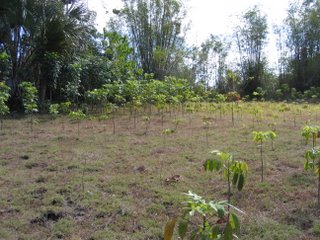
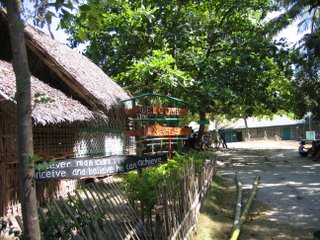
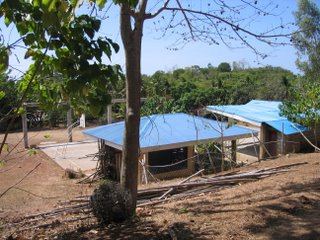
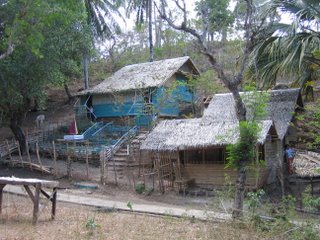

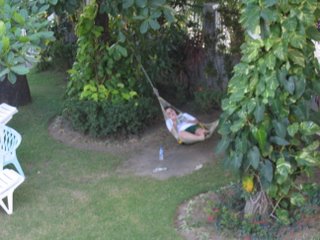

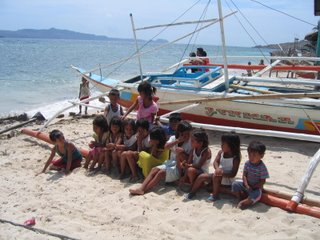

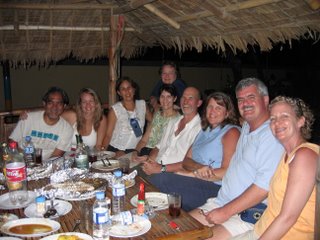
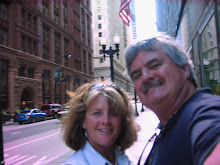
No comments:
Post a Comment